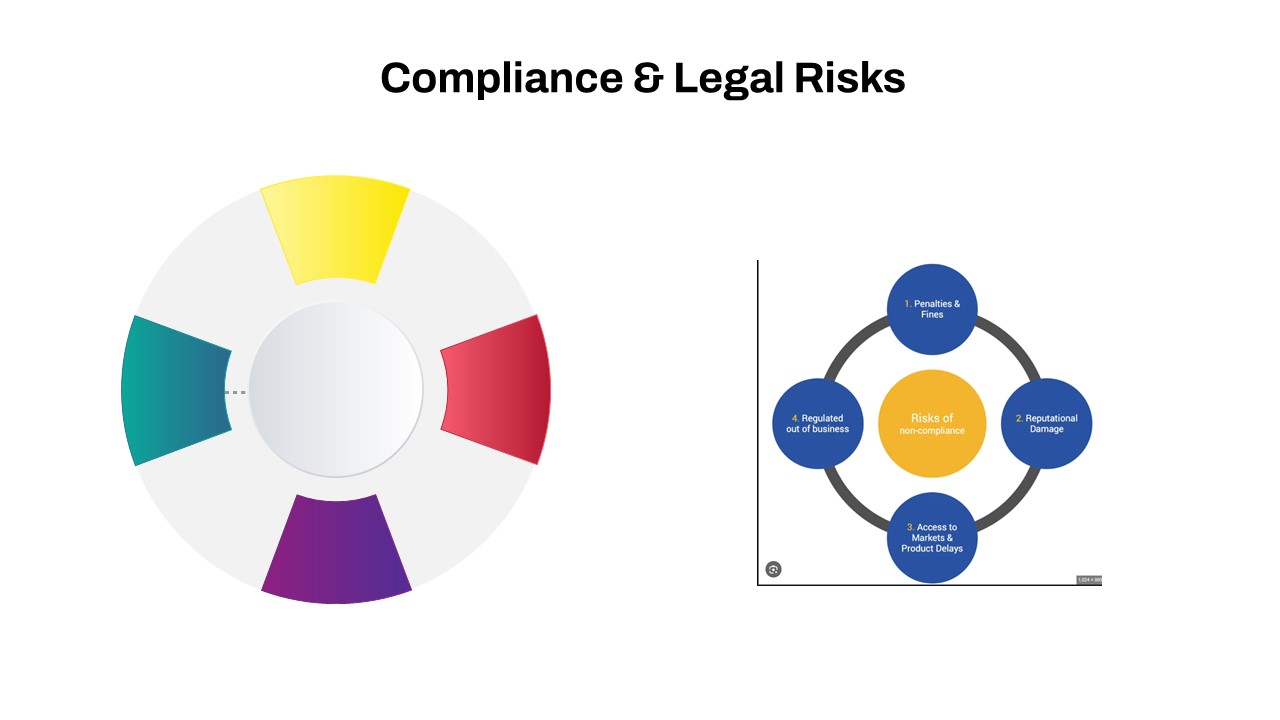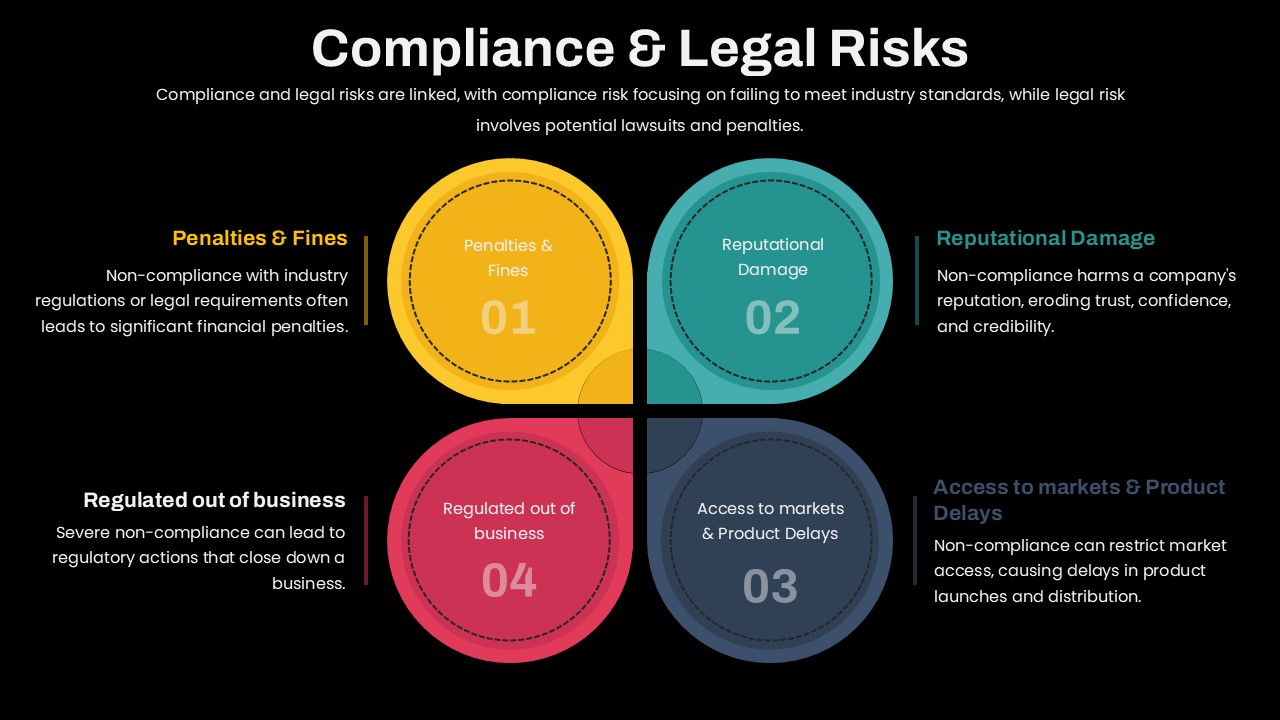compliance-legal-risks-template-powerpoint-google-slides


Description
Use this Compliance & Legal Risks slide to visualize four critical risk outcomes in a quadrant diagram that centers on organizational exposure. The design features a clean, circular layout divided into four colored segments—Penalties & Fines (yellow), Reputational Damage (teal), Access to Markets & Product Delays (navy), and Regulated Out of Business (red)—all converging on a central hub labeled “Compliance & Legal Risks.” Adjacent text placeholders let you succinctly describe each risk type and its business impact. Subtle drop shadows, flat color fills, and generous white space ensure clarity, while the ringed structure emphasizes interdependencies between risk categories.
Built on master slides with intuitive placeholders, this template allows you to swap segment labels, adjust colors to match corporate palettes, and resize the central hub without disrupting alignment. Simply edit text boxes to include compliance standards, legal references, or mitigation strategies. The minimalist backdrop guarantees pixel-perfect rendering in both PowerPoint and Google Slides, eliminating formatting headaches and speeding up slide preparation.
Ideal for compliance reviews, legal briefings, and risk-management workshops, this quadrant diagram helps stakeholders quickly identify priority areas and allocate resources effectively. Whether you’re presenting to board members, conducting audit debriefs, or training teams on regulatory requirements, this slide delivers a polished, data-driven narrative. You can also repurpose the structure to map SWOT analyses, impact-vs.-effort matrices, or cross-functional dependencies by relabeling segments and updating color semantics.
Who is it for
Risk managers, compliance officers, legal counsel, and audit teams will benefit from this slide when assessing regulatory exposure, communicating legal risk profiles, or driving governance discussions.
Other Uses
Repurpose this diagram for SWOT assessments, impact-effort prioritization, stakeholder influence mapping, or any four-quadrant framework by editing the segment titles and descriptions.
Login to download this file

















































